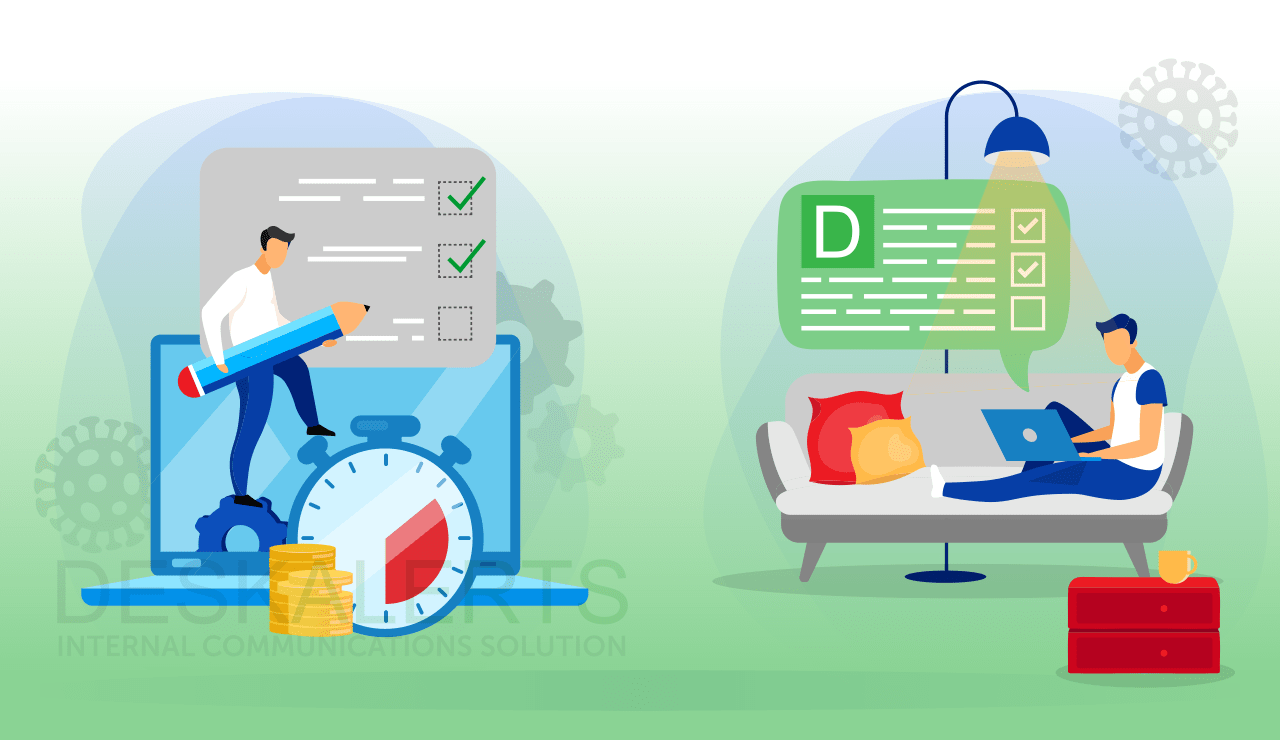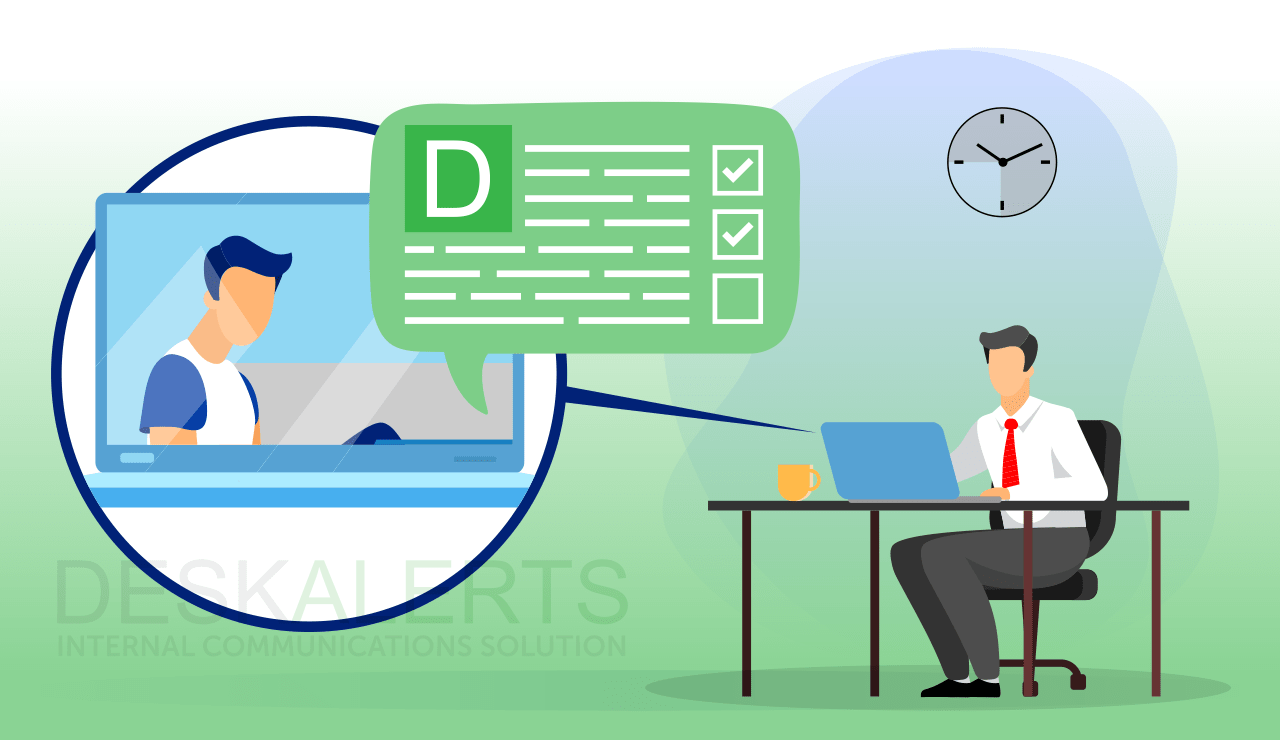 Having consistent onboarding processes in place has never been more important than it is right now to ensure that your new employees can be equipped to do their jobs and ensure your team performs well.
Having consistent onboarding processes in place has never been more important than it is right now to ensure that your new employees can be equipped to do their jobs and ensure your team performs well.
Glassdoor research found that new hire retention improves by up to 82% and productivity by more than 70% when there are strong onboarding processes in place within a company.
Unfortunately, many organizations fail in onboarding at the best of times.
A Gallup study found that 88% of organizations don’t onboard new employees well.
Many organizations struggle with onboarding during normal times - often leaving the induction of new employees to individual managers which means that there is an inconsistent introduction to the company across the board.

The COVID-19 pandemic is presenting even more challenges than usual for onboarding, particularly when new team members will begin their new job from a remote location. While new recruits may not get to meet their colleagues face-to-face for a long time, they need to be able to hit the ground running as part of the team while working remotely.
The challenges of onboarding during COVID-19
Whether your company already has an onboarding process that it needs to modify during the pandemic, or it’s become obvious you need one during this time, there are a number of challenges that organizations are facing in onboarding remotely during COVID-19.
This includes:
- New recruits can feel isolated and lost and not know what to do
- New recruits may not have access to the systems and tools they need
- New recruits may not know about policies and procedures
- New recruits may not feel like part of the team or have a good sense of the corporate culture
Ordinarily, most of these things can be easily overcome to some extent while a new employee is co-located with their colleagues: usually, people will be helpful and assist them to overcome onboarding challenges. Sometimes, however, it can be quite daunting and new recruits can feel like they are ignored and neglected and have to find their own way. During COVID-19 and remote work this can be magnified and it can be difficult for new employees to know who to reach out to for help.

Onboarding ideas for new employees during COVID-19
Preventing your new employees from feeling disconnected and distant during these times can be challenging, but not impossible. At the same time, you need to ensure that your new team members understand how they fit into the overall team, and how their individual role contributes to the company’s success.
These are some of the best strategies for onboarding remotely during COVID:
1. Begin the process well before the employee’s start date
Many of us have experienced having the first day in the office where we don’t have a computer login, a telephone, an email address, and more. This happens usually when a hiring manager has failed to complete all the paperwork on time and the onboarding process can’t begin on the employee’s first day.
Now imagine this happening if someone is working from home during a pandemic! Not only is it unproductive to have a new employee doing nothing for extended periods of time, while you’re paying them, it can also give them a poor impression of the company and can be the beginning of their plans to leave and find a new job.
Make sure all your hiring managers understand that they cannot leave this to the last minute and they must ensure that new recruits are set up and ready to begin working on their very first day. This may mean getting computers and telephones to them the week before they start their new job, or getting them remote logins that they can access immediately on their own devices to begin working as part of the team. You can even schedule pop-up alerts and surveys about onboarding training program in advance of the employee starting so you’re already on the way.
2. Give all new recruits the same important information
There are some things about working in your company that are the same for every single employee, no matter what their role is, and things they shouldn’t have to find out by asking around and hoping for the best.
Whether you provide a welcome pack, create a handbook, make an onboarding video, or have a manager take new recruits through the process individually, it’s important that all new staff members understand:
- Policies and procedures
- How to apply for vacation or sick leave and other benefits
- How to use your computer systems
- How to schedule meetings
- When they will be paid
- Who to get information from about corporate functions such as HR
- How to access and store documents
- Who to call with any IT problems
- How performance is appraised
Then there are job-specific functions that need to be consistently communicated, including:
- The requirements of the role
- How to access any special software that may be needed
- Who the team members are and how to contact them
- Expectations and KPIs
- Who to get help from
3. Communication is critical
It’s not possible to communicate too much when you’re onboarding remote employees. While you should always maintain constant lines of communication with new employees as they are learning the ropes, it’s even more important you do so while they are working remotely.
Schedule lots of catch-ups between the new team member and their supervisor for the first few weeks. These can be via phone or video chat. Make sure your new team member has ways to reach out to other colleagues for advice and assistance for example via instant messaging or corporate social network platforms.
Send pop-up notifications to their computers to give them information about important policies, rules, and other corporate knowledge over the course of their first few weeks so they aren’t bombarded with too much information at once. You can even send them quizzes to see if they are retaining the information.
And remember, communication is a two-way street. Getting feedback from your new employees is valuable - so survey them to get feedback so you can fine-tune your onboarding process during COVID and address any gaps.
>> Learn more about the IT onboarding process for new employees (with free checklist) <<
4. Establish a buddy program
A buddy program is when a seasoned employee of the company is matched with a new recruit and they check in on them regularly for their first few months. This can be an informal meeting. During COVID they could have a video or phone chat over a coffee. The seasoned employee can assist the new recruit to learn the ins and outs of the company and to introduce them to the people they need to know about.
Research by HCI found that 87% of companies that use a buddy program for onboarding find it an effective way to speed up the onboarding process.
Unfortunately, less than half of all organizations use this method.
Here at DeskAlerts, our company has begun using a buddy program during the pandemic when we’ve had new employees join us, and so far we’re finding it very successful!
5. Expose your new recruits to your company culture
Your company culture is what makes your organization unique. When company culture is strong, employees are more satisfied, more engaged, and more productive. It is a combination of things like working conditions, perks, team attitude, management style, and organizational values that set a company culture.
Employees seek out organizations with a good corporate culture.
A Randstad survey in 2018 found that 86% of employees wouldn’t apply to or continue to work for a company that has a bad reputation with former employees.
Showcasing the things that make your company culture great may seem difficult when new recruits aren’t physically in the office… but it isn’t insurmountable. You may need to get creative in order to do this, whether it’s having virtual lunches or after-work drink sessions, team trivia, or other competitions. Essentially you need to keep building your team in informal ways and encourage your new starters to participate so they can feel as though they are part of the team.
***
The way we work has changed rapidly, and it may be a long time before we return to “normal” - if we do at all. Taking this time to fine-tune your onboarding processes can help you to ensure your new recruits settle in quickly and perform their best to achieve your company’s goals.
 Caroline Duncan
Caroline Duncan
 Having consistent onboarding processes in place has never been more important than it is right now to ensure that your new employees can be equipped to do their jobs and ensure your team performs well.
Having consistent onboarding processes in place has never been more important than it is right now to ensure that your new employees can be equipped to do their jobs and ensure your team performs well. 







